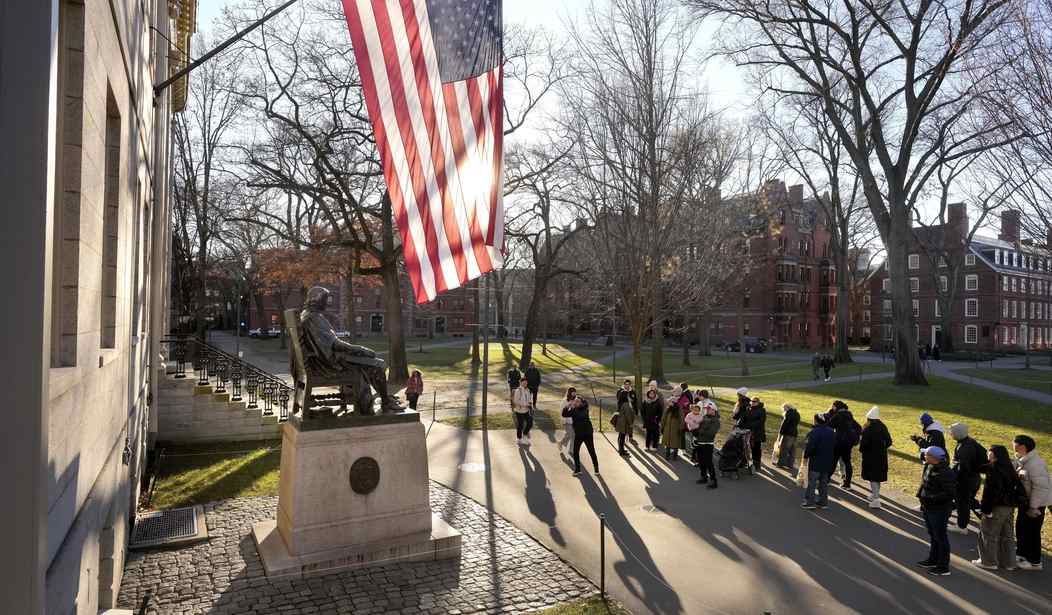Yesterday, I pointed out that while a number of elite colleges and universities had released data on their enrollment after the end of Affirmative Action, Harvard had not. This seemed strange given that a) Harvard was one of two defendants in the case which eventually ended Affirmative Action and b) Harvard said it would release the data after the deadline to commit in May and yet four months later it hadn't done so.
Today, Harvard finally released that data and the results do show a decline in black enrollment but also an uptick in Hispanic enrollment.
The share of Black students declined to 14 percent from 18 percent. The proportion of Hispanic students in the Class of 2028 increased by 2 percentage points to 16 percent from 14 percent in the Class of 2027, while the proportion of students who identified as Asian American remained fixed at 37 percent.
White enrollment apparently went from 29% to 32%. However, all of these numbers have an asterisk because 8% of the entering class didn't specify a race this year. That's double the number (4%) that declined to state their race last year. Obviously depending how that 8% is split up, it could change the picture a bit.
Generally, the results at Harvard look similar to the results from UNC. UNC was the other defendant in the Supreme Court case which ended Affirmative Action.
At UNC, 10.5 percent of first-year and transfer students enrolling in the fall of 2023 identified as Black or African American, according to university officials. This fall, 7.8 percent did. The share identifying as Hispanic or Latino dipped slightly from 10.8 percent to 10.1 percent. The number identifying as Asian or Asian American rose slightly, from 24.8 percent last fall to 25.8 this year. The number of White or Caucasian students held steady — 63.7 last fall and 63.8 percent this fall.
So in both cases a slight decline in black enrollment and white or Asian enrollment climbed a bit. But the differences aren't huge, certainly not as big as opponents of the Supreme Court case predicted. Edward Blum, co-founder of the group that brought the case against Harvard, made this point today.
Edward J. Blum, the co-founder of the anti-affirmative action group that sued Harvard in 2014, wrote in a statement to The Crimson that the demographic results from Harvard and peer institutions are “mostly indecipherable without detailed racial data about standardized test scores, recruitment policies, advanced placement tests, legacy preferences, and other factors.”
“Yet, Harvard’s results are bewildering because throughout the SFFA litigation, the college passionately argued that maintaining the racial composition of their incoming class would not be possible without implementing the type of racial discrimination that was barred by the Supreme Court,” Blum added. “It appears that was not true.”
The NY Times also picked up on this same theme. There is a change here, enough of one that schools can't pretend Affirmative Action didn't matter at all, but it's also not looking like the calamity Affirmative Action's defenders claimed it would be.
The predictions were dire. In the course of a bitterly contested trial six years ago, Harvard University said that if it were forced to stop considering race in admissions, the diversity of its undergraduate classes would be badly compromised.
Now, a year after the Supreme Court struck down the school’s admissions system, effectively ending affirmative action in college admissions everywhere, the numbers are in for the first class to be admitted, and the picture is more nuanced and complex than predicted.
There's are a few theories for why the declines at Harvard, Yale and Princeton aren't as dire as predicted. It could be that some schools aren't abiding by the Court's decision. After all, their selection process this year remains something of a black box. But another likely possibility is that the very top schools just aren't competing for students the same way that slightly less prestigious schools are.
Admissions experts suggested even before the new numbers came out that the most coveted schools, like Harvard, Yale and Princeton, would be best positioned to maintain their Black enrollment because the students who were admitted to them were very likely to accept. So in that view, they are unicorns, part of a highly selective ring of schools that scooped up the top students and remained relatively unaffected by the ban on race-conscious admissions.
Schools that were slightly less selective — like Amherst, Tufts and Brown — saw bigger changes to their demographics.
This is still just the first year. No doubt there will be more changes to come and it may take a few years before these schools come up with alternative ways to create "equity" without focusing on race. In the meantime, some of the comments at the NY Times were encouraging. It feels like conservatives have won this argument. Here's the top comment.
Preference due to race should never be used in college admissions. Never.
Diversity and representation are far less vital than merit and equal opportunity. Unfairly increasing the numbers of one racial group at the expense of another is completely wrong. Kudos to the oft-incorrect Supreme Court for getting this ruling right.
Stop with the unhealthy obsession with immutable group characteristics and focus instead on the achievements of individuals.
Except for the unnecessary knock on the Supreme Court (suggesting the author is on the left), that sounds right to me. College enrollment should be based on merit and hard work, not on race.







Join the conversation as a VIP Member